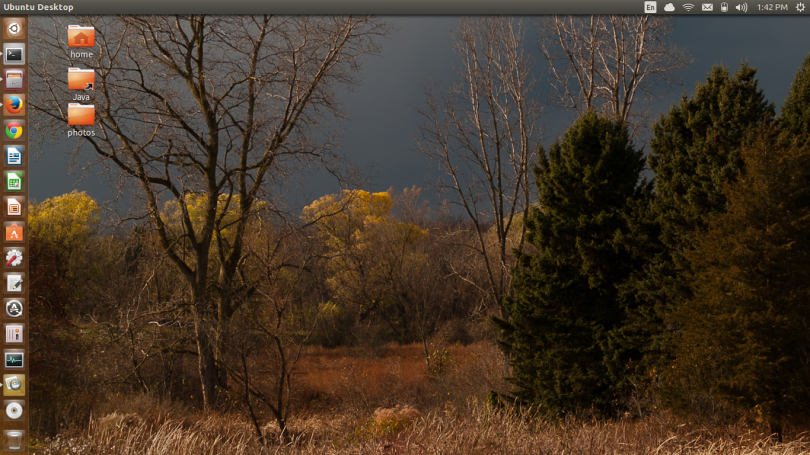 This is not my first time around the track with Linux. Not by a long shot. I go back to 1993 with SLS, Slackware and later with Yggdrasil Linux. Over time I settled on early versions of Redhat, with a long period using S.U.S.E. Linux, later openSUSE, with side ventures into early Ubuntu and Mandriva. At this point in time I’m happy with Ubuntu 13.10 as my primary personal Linux platform. I deal with Red Hat Enterprise Linux at work. And for those odd needs to view other distributions, I simply install and run them as virtual machines using VMware Player. The battles with getting distributions to run on hardware are long since gone. Running on native hardware or virtualized, Linux Just Works.
This is not my first time around the track with Linux. Not by a long shot. I go back to 1993 with SLS, Slackware and later with Yggdrasil Linux. Over time I settled on early versions of Redhat, with a long period using S.U.S.E. Linux, later openSUSE, with side ventures into early Ubuntu and Mandriva. At this point in time I’m happy with Ubuntu 13.10 as my primary personal Linux platform. I deal with Red Hat Enterprise Linux at work. And for those odd needs to view other distributions, I simply install and run them as virtual machines using VMware Player. The battles with getting distributions to run on hardware are long since gone. Running on native hardware or virtualized, Linux Just Works.
I can do the majority of my work on either Windows 8.x or any contemporary version of Linux. My two primary platforms are Ubuntu (as just mentioned) and Windows 8.1. My need to run Windows is to support those tools and workflows that industry demands, primarily Microsoft Office. I also have several key software packages that support my digital photography, both from Adobe: Photoshop and Lightroom, and all the plugins for those tools such as the Nik collection (now Google Nik). Whatever it takes, I truly use the right tool for the right job. I’m long past engaging in strident OS polemics.
Right now, for the kind of work I do at home, my primary notebook is the one I’m writing this post in, the Samsung R580 running Ubuntu. It’s light and fast and does everything I want to do, and probably quite a bit more I don’t know about. The only time I touch the Windows notebook is when I’m post processing raw images from my cameras.
The screen shot is of my Ubuntu notebook using one of my photos as the wallpaper. The original photo was taken with an E-1 up around Ann Arbor Michigan one late fall day in 2011. It’s part of the sequence I wrote about earlier when extolling the E-1. The post processing was done at the time on Lightroom on Windows 7.
 Ubuntu trimmed the original,which you see full size in the second screen shot. I love this image because of its lighting. It looks like a Renaissance landscape with its large dark clouded areas and touches of low sun lighting up the remaining fall foliage. I like to look at this than androids and abstract drawings that make up too many wallpapers.
Ubuntu trimmed the original,which you see full size in the second screen shot. I love this image because of its lighting. It looks like a Renaissance landscape with its large dark clouded areas and touches of low sun lighting up the remaining fall foliage. I like to look at this than androids and abstract drawings that make up too many wallpapers.
It’s gotten to the point where it’s no longer an issue, except for very specific outlying use cases, what OS or even what set of applications you use. In fact, as Tom Warren of The Verge noted, there was no presence of Microsoft platforms at the 2014 CES. If products for platforms were mentioned, those platforms were Apple and Android. I could write another entry on why that is, but here’s a simple hint: cost of development tools.
For Android, development tools are varied and all free, and can be hosted on Windows, Linux and Mac OSX. For Apple, the development tools platform, Xcode, isn’t free, but nearly so for just $99. But for Microsoft, MSDN or Visual Studio or whatever you want to use is expensive, averaging well into the four figures and higher. Microsoft has never been free, but in the early days of Windows (late 1980s through the early 1990s) Microsoft was quite affordable. But in Microsoft’s drive to make development tools a cash positive cost center, the price of tooling and support was driven into areas where only business developers and major corporations could afford support. Microsoft, which started in personal computing, is now a corporate behemoth supporting other equally large corporations. They no longer have any real touch with consumer electronics which now includes personal computing. Even their X-Box line has been something of a series of happy accidents and appears lately to be headed off the rails. Old folks like me still use Windows because we essentially grew up with it, having been around when all we had was MS-DOS. Microsoft, in its blind pursuit of profitability and IBM, slowly moved on from those roots and left behind everything that gave them birth. You saw the results of that distant decision at CES this year. And it will continue on that way.
That’s not such a place to be if you’re a consumer, and especially if you a DIYer. The selections from everyone are all high quality. The freedom to pick and choose whatever and not have to be constantly drained, financially, is a Godsend. Microsoft won’t go out of business any time soon, and I’ve got better things to do with my time than worry about Microsoft. Very creative things.


You must be logged in to post a comment.